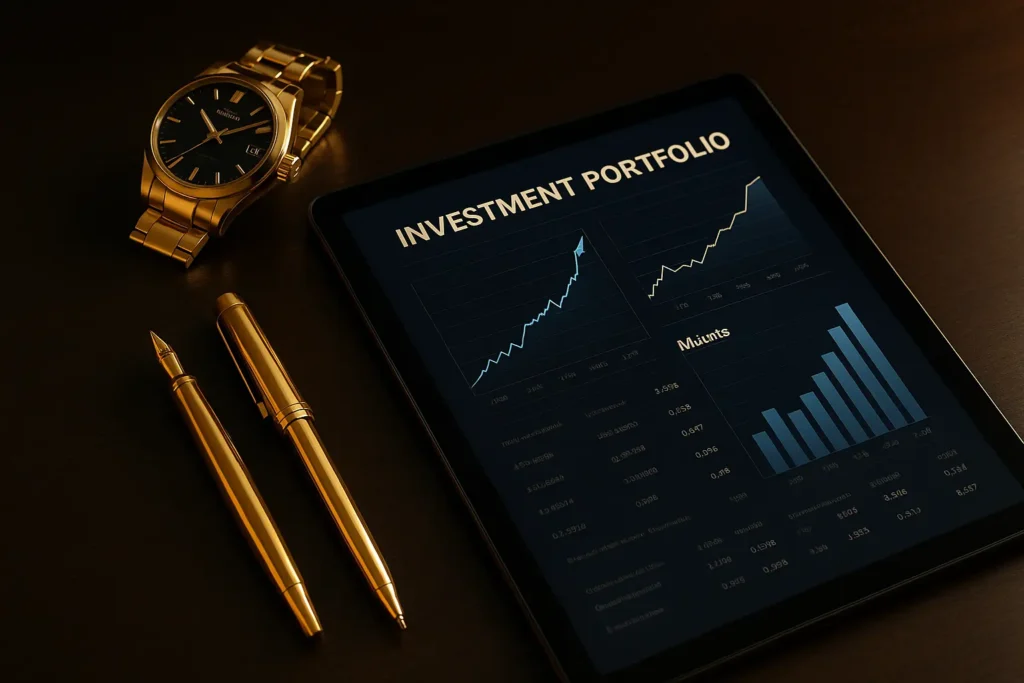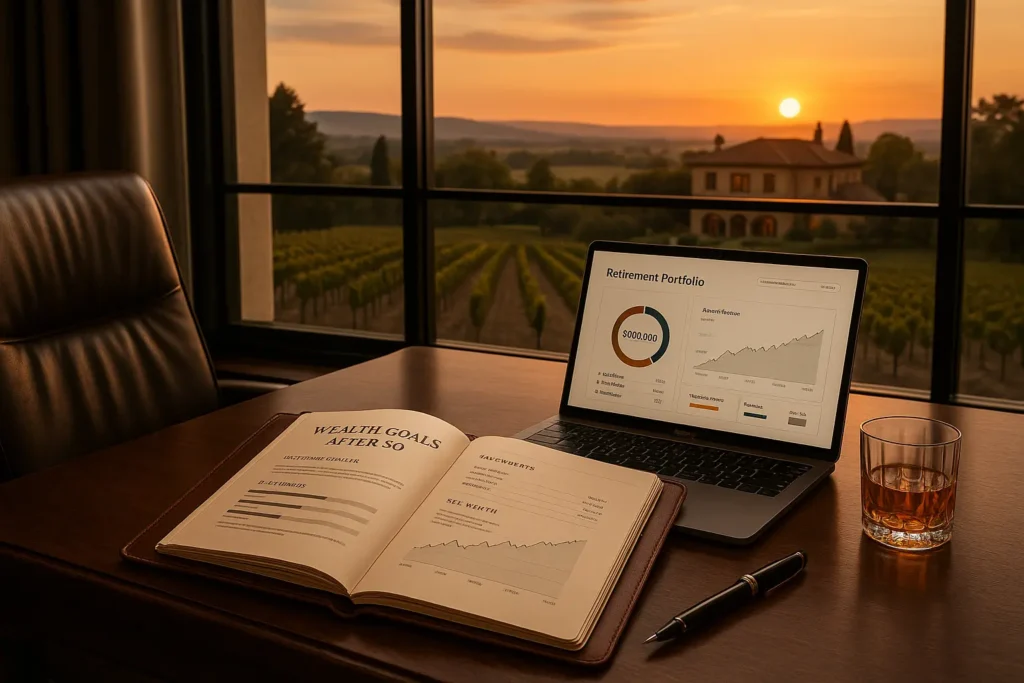Best Mutual Funds to Invest in 2025: Top Picks for Every Investor
Mutual funds combine professional management with diversification, making them one of the smartest ways to grow wealth. They pool money into stocks, bonds or other assets, spreading risk across many securities. In 2025, mutual funds remain hugely popular – for example, Indian mutual fund assets surged 29% in 2024 to a record ₹67.81 lakh crore, and U.S. funds alone held about $28.15 trillion.
Whether you’re a cautious retiree or an ambitious saver, choosing the best mutual funds for your goals is critical. In this guide by financekd, we explain what makes a fund “best,” outline key fund categories, and highlight top picks (equity, debt, ELSS, index, and SIP-friendly) for 2025. We’ll also share essential mutual fund investment tips to help beginners invest wisely.

What Makes a Mutual Fund the “Best”?
Choosing the best mutual funds depends on matching them to your goals and risk profile. Key factors include:
- Performance History: Look for consistent, multi-year returns relative to peers. A top fund will have beaten its benchmark over full market cycles. (Remember, past performance isn’t a guarantee, but it indicates how the fund has been managed.)
- Fund Manager Expertise: Experienced managers with a proven track record can improve performance. Check how long the current manager has managed the fund.
- Risk Level: Consider the fund’s volatility. Higher returns often come with higher ups-and-downs. Make sure the fund’s risk aligns with your tolerance. (For conservative investors, a fund with modest volatility is key.)
- Expense Ratio: Cutting down on investment fees means you get to hold on to more of your profits. Even a modest gap of 0.5% to 1% in yearly expenses can lead to noticeably higher returns over time. Research from Morningstar highlights that lower expense ratios are strong indicators of better investment outcomes in the future.
- Investment Objective & Holdings: The fund’s stated goal and actual holdings should fit your needs (e.g. growth vs. income, sector focus, etc.).
In short, the “best” funds are those that have delivered high returns in line with their risk, have low costs, and are managed by reputable teams. We’ll use these criteria to select top performing mutual funds for each category below.
Categories of Mutual Funds to Consider
Mutual funds come in several categories. Each has pros and cons, especially for conservative investors:
- Equity Funds: Invest mainly in stocks. They offer the highest return potential, but also higher risk and volatility. For example, large-cap and mid-cap funds seek long-term growth, but can swing 15–20% in a bad year. Equity funds are best for long-term goals (5+ years) and higher risk tolerance.
- Debt (Fixed-Income) Funds: If you’re looking for safer investment avenues, bonds and money market instruments offer a reliable choice with relatively lower risk than equities. Although the returns are generally moderate—ranging between 4% and 8% annually—they provide a consistent income flow. Within the debt category, you can explore options like ultra-short duration funds, short-term debt funds, or dynamic bond funds. Cautious investors often lean towards instruments with strong credit ratings, such as banking & PSU or gilt funds, due to their stability and dependable returns.
- Hybrid (Balanced) Funds: Hybrid mutual funds strategically blend equity and debt assets within a single portfolio to offer a mix of capital appreciation and financial stability. Designed for moderate risk appetites, they cater to investors aiming for steady returns without extreme market exposure. For example, Conservative Hybrid Funds typically allocate 10–25% to equities and 75–90% to fixed-income assets, making them ideal for those with a strong preference for capital preservation. Meanwhile, Balanced Hybrid Funds maintain around 40–60% equity exposure, providing a middle ground for investors seeking both growth and lower volatility. These funds are a practical choice for individuals looking for smoother market participation.
- Index Funds: Passive equity funds that track a market index (e.g. S&P 500, Nifty 50). They mirror the market’s performance at very low cost. Index funds are generally safer than actively managed equity funds because they don’t rely on stock-picking – they hold all index stocks. They tend to deliver broad-market returns (typically ~7–12% p.a. over the long term) with minimal fees. This makes index funds attractive for conservative investors seeking market returns without stock-selection risk.
- ELSS (Tax-Saving) Funds: These are equity funds with a mandatory 3-year lock-in, eligible for tax deductions (up to ₹1.5 lakh under 80C in India). They often focus on diversified or large-cap stocks. ELSS can deliver high returns similar to equity funds, but you must hold for 3 years. Investors get tax savings plus growth potential; however, volatility remains high.
Each category can be the “best” choice depending on your need. Conservative investors typically favor debt or balanced funds for safety, but may allocate a portion to equity/index for growth. Below, we highlight top fund picks in each category for 2025.
| Category | Description | Conservative Fit |
|---|---|---|
| Equity Funds | Invest in stocks. High potential returns (often 12–15%+ p.a.), but volatile. | Suitable only if allocating small portion for growth. |
| Debt Funds | Invest in bonds/fixed income. Lower risk, steady income (typ. 4–8% p.a. long-term). | High fit – least volatile. |
| Hybrid Funds | Mix of equity & debt. Moderate risk/returns. E.g., conservative hybrid (75–90% debt) very low risk. | Good for balanced safety and growth. |
| Index Funds | Passive funds tracking market indices. Market returns (avg ~7–12% p.a.) at very low cost. | Good – broad diversification, low fees. |
| ELSS (Tax) | Equity funds with 3-year lock-in and tax benefits. High risk, high potential return. | Moderate – attractive for tax savings and equity exposure. |
Best Mutual Funds for 2025: Top Picks by Category
Best Equity Mutual Funds (Growth Focus): For growth-oriented investors, the following equity funds have standout multi-year performance:
- Motilal Oswal Midcap Fund (Direct) – Growth: This mid-cap fund has been a star performer. Over the past 5 years (annualized), it delivered roughly 29.4% per year. That means ₹10,000 invested five years ago would have grown to over ₹49,000. It is ideal for long-term investors who can handle high volatility. Its strong returns come from a focused mid-cap portfolio and experienced management.
- HDFC Mid-Cap Opportunities Fund – Direct Growth: Another top mid-cap fund, it returned about 29.4% annualized over 5 years. HDFC’s skilled team has consistently picked growing mid-sized companies. This fund suits investors seeking aggressive growth with a ~5–7 year horizon.
- SBI Contra Fund – Direct Growth: Direct Growth takes a distinctive contrarian route by targeting undervalued large- and mid-cap companies with solid fundamentals. Over the last five years, it has generated a remarkable annualised return of around 29.5%. This disciplined approach of investing in overlooked yet promising stocks has consistently delivered results, positioning it as a compelling pick for investors with a long-term outlook seeking large-cap opportunities.
All the funds mentioned above are equity investments known for delivering substantial returns. They are top performing mutual funds but come with commensurate risk. Use them if you’re comfortable with swings and have at least a 5-year horizon. We favor the Direct plans (lower expense ratios) of these funds to maximize returns.
Top Debt Mutual Funds (Stability Focus): For conservative investors seeking steady income, high-quality debt funds shine. Recent performance (3–5 yr annualized) for some top funds:
- Aditya Birla Sun Life Medium Term Plan – Direct: A medium-duration bond fund focusing on AAA/AA papers. Its annualized 5-year return is about 14.3% (even higher in 2024), reflecting its good yield pick. This fund suits those targeting slightly higher returns from bonds, accepting some interest-rate risk.
- ICICI Prudential All Seasons Bond Fund – Direct: A dynamic income fund that moves across bonds and duration. It returned around 7.9% annualized over 5 years. Low equity exposure and active duration management make it relatively stable. Good for investors wanting moderate returns with low risk.
- ICICI Prudential Banking & PSU Debt Fund – Direct: Direct focuses on investing in premium bonds issued by banks and public sector enterprises. It has achieved an average annual return of around 7.2% over the last five years. Thanks to its outstanding creditworthiness, the fund carries minimal risk of default, making it an excellent option for investors who value the security of government-supported debt investments.
- Franklin India Corporate Debt Fund: A corporate bond fund yielding roughly 7.2% annualized over 5 years. It focuses on high-rated corporates. It’s a solid pick for capital preservation with slightly higher yield than pure government funds.
Debt funds are touted as “least risky” among mutual funds. Returns are modest but reliable. The funds above suit conservative portfolios, offering 5–10% typical returns in normal markets, and helping balance out riskier equity picks. (As ET Money notes, debt funds can still be taxed and face interest-rate/credit risks, so choose tenure carefully.)
Best ELSS Funds for Tax Saving: These equity-linked savings funds combine growth with tax benefits. Top ELSS performers include:
- SBI Long Term Equity Fund (Tax Saver) – Direct: This is actually a 3-year-locked large-cap fund, with ~30.1% annualized over 5 years. It’s large, liquid, and tax-efficient. A perennial favorite, it suits investors committed to lock-in for tax breaks while still chasing high returns.
- HDFC ELSS Tax Saver Fund – Direct: A diversified large/mid-cap fund, it returned about 29.6% annualized over 5 years. It offers good tax saving (80C) plus equity upside.
- Parag Parikh ELSS (Tax Saver) – Direct: Managed by PPFAS, it blends Indian and global stocks. It delivered ~29.3% annualized over 5 years. Despite a more concentrated portfolio, it has given strong returns. (Note: Parag Parikh Flexicap is an alternate PPFAS fund with no lock-in, but here we use their dedicated ELSS variant.)
- Motilal Oswal ELSS Tax Saver – Direct: A mid/small-cap heavy ELSS that gave 28.3% annualized (5Y). It’s riskier but has high growth potential.
For those seeking tax benefits in 2025, these ELSS funds stand out as some of the best mutual fund choices. They offer impressive returns while enabling annual tax savings of up to ₹46,800. Don’t forget the compulsory 3-year lock-in period—opting for systematic investment plans (SIPs) can help you spread these advantages smoothly over multiple years.
Best SIP Mutual Funds: A Systematic Investment Plan (SIP) approach—investing fixed amounts monthly—suits almost any mutual fund. Funds often recommended for SIPs are those with strong track records and moderate volatility. For example, Motilal Oswal Midcap and ICICI Prudential Infrastructure Fund consistently top SIP return charts, thanks to their long-term performance. (Motilal Midcap, as above, averages ~29% 5Y.) Also consider large-cap or balanced funds for SIPs to smooth volatility. In general, look for best SIP plans by focusing on funds that have compounded wealth over time. Regular SIPs in large-cap index funds, for example, can yield market-beating returns with less stress than timing lumpsum buys.
Top Index Funds for Passive Investing: For truly low-cost, passive investing, index funds are ideal. They simply mimic market indices, giving you the entire market’s return. Some notable passive options:
- Vanguard Total Stock Market Index (Admiral Shares) – The world’s largest mutual fund (over $1 trillion AUM), providing broad U.S. equity exposure. It won’t beat the market (it is the market) but charges only ~0.04% expense ratio.
- Nifty 50 / S&P 500 Index Funds – In India, funds tracking the Nifty 50 (and similar indices) have ~10–12% annual returns historically.
- Bond Index Funds (e.g. Edelweiss CRISIL Gilt Index) – Passive debt funds tracking government bond indices (12.5% p.a. in 2024 for an April 2037 gilt index).
Index funds suit conservative investors who want market returns without stock-selection risk. With negligible expenses and automatic diversification, they often outperform most active funds net of fees.
How to Choose the Right Mutual Fund for You
Selecting the right fund requires matching it to your profile and goals. Key steps and tips:
- Assess Risk Tolerance: Can you stomach big swings? If not, stick to debt, hybrid (conservative), or large-cap funds. If yes, you can allocate more to equity. (Personal risk tolerance can change; always invest with a cushion of time.)
- Define Time Horizon: How long can you stay invested? Equities need 5+ years to smooth cycles. If you need money sooner, favor short-term debt or liquid funds. Long horizons allow you to ride out volatility and compound returns.
- Set Clear Goals: Are you saving for retirement, a child’s education, a down payment? Growth goals suit equity, while income or short-term goals suit debt. (Identifying goals helps narrow the fund universe.)
- Consider SIP vs Lump Sum: SIPs average out market volatility and are great for discipline. Lump-sum might work if you have idle cash and markets are low. You can also do a hybrid approach (some lump-sum + monthly SIP).
- Direct vs Regular Plans: Whenever possible, choose Direct plans of funds (available via platforms or AMCs) because they have lower expense ratios. Over time, that small cost difference can add up to a significant extra return. Regular plans pay distributor commissions, dragging returns.
- Review Fund Documents: Read the fund’s prospectus and fact sheet. Check holdings, expense ratio, and performance in good and bad markets. A high-return fund might have taken extra risk—make sure you understand what it holds.
Above all, follow a strategy instead of chasing short-term trends. As a veteran adage says, “Don’t try to time the market.” (Even experts agree it’s futile.) Instead, align your fund choice with your risk comfort and time frame. For example, a 30-something with 20 years to retire might use a high-allocation equity fund or mid-cap fund, while a 10-year goal might use bond or balanced funds. Consistency in investing (especially via SIPs) and patience generally beat trying to pick the “next big winner.”
Common Mistakes to Avoid
Even the best funds can disappoint if used poorly. Avoid these pitfalls:
- Chasing Past Performance: Investors frequently chase funds that showed spectacular growth, like “50% returns last year,” only to be caught off guard when the market shifts. It’s important to remember that “historical gains don’t predict what’s next.” Assess fund performance over longer periods and in comparison, with peers or benchmarks. Don’t base your decision just on recent achievements — dig deeper into the factors driving those returns.
- Ignoring Expense Ratios: High fees can erode returns. A fund might advertise big returns, but if it charges 2% in expenses, it may not outperform a 0.2% index fund. Morningstar data confirms lower fees generally predict better future returns. Always check the expense ratio before investing.
- Market Timing: Trying to buy at lows and sell at highs almost never works. Even professional analysts can’t do it consistently. Instead, diversify (across asset classes and funds) and stick with your chosen funds through ups and downs.
- Poor Diversification: It’s a common misconception that owning many funds automatically diversifies your portfolio. In reality, several funds—especially those focused on large-cap stocks—can share similar investments, leading to redundancy rather than variety. To avoid this, carefully examine the underlying assets of each fund to ensure you’re not repeatedly investing in the same companies or industries. True diversification comes from strategically spreading your investments across different asset types, such as combining stocks with bonds.
- Neglecting Your Plan: Life changes, so should your investments. Review your portfolio at least annually. If your goal or risk profile changes (job change, nearing retirement, etc.), adjust your fund mix accordingly.
By staying disciplined, focusing on low costs and diversification, and not swayed by short-term noise, you’ll avoid these common errors. Instead, use mutual fund investment tips (like regular SIPs and fund comparisons) to stay on track.
How to Start Investing in the Best Mutual Funds
Getting started is easier than ever with digital platforms. Here’s a step-by-step guide:
- Choose a Platform: Select a reliable mutual fund investment app or website (e.g. Groww, Zerodha Coin, Kuvera, or directly via an AMC’s site). Ensure the platform is SEBI-registered and lets you buy direct plans.
- Complete KYC: Mutual funds in India require KYC (Know Your Customer). This usually means submitting PAN, Aadhar, and a photo. Many apps allow instant e-KYC with Aadhaar OTP or video KYC. Once done, you’re eligible to transact.
- Research and Select Funds: Decide on asset allocation (e.g., 50% equity, 50% debt). Then pick funds. Use our above categories and picks as a starting point. Check each fund’s latest NAV, performance and expense on the platform. Read user reviews or expert ratings if available.
- Decide SIP or Lump Sum: For most, SIP is recommended – start with even ₹500–₹1,000 per month if you’re cautious. Set up an auto-debit from your bank. For lumpsum, transfer funds once per purchase. Many apps support both.
- Invest Directly: On your chosen platform, select the “Direct” plan option, enter amount, and confirm. Check any lock-in (like ELSS 3-year lock). Review your cart carefully before confirming.
- Monitor & Rebalance: After investing, periodically check performance. Don’t react to every market swing. Rebalance annually (e.g., if equity has grown too large relative to your plan, shift some to debt, or vice versa).
By using trusted apps and following a simple process, even beginners can start investing in best SIP plans quickly. The hardest part is starting. Once you do, let compounding and disciplined investing do the rest.
Conclusion
Picking the best mutual funds for 2025 means aligning them with your goals, risk tolerance, and time frame. We’ve covered the criteria for a top fund (performance, cost, management), explained key categories (equity, debt, hybrid, index, ELSS), and listed our favorite best mutual funds by category. Conservative investors should lean toward debt and balanced funds, perhaps with a small equity slice for growth. Beginners and SIP investors can favor index and stable large-cap funds.
At financekd, we believe everyone can benefit from systematic investing in quality mutual funds. The markets will always have ups and downs, but choosing the right funds – and sticking to your plan – is what grows wealth over decades. Start today by opening an account on a trusted platform, completing your KYC, and putting your money to work in funds that fit you. The sooner you begin, the more you’ll benefit from compounding.
Ready to build wealth? Explore our recommended top mutual funds and start investing today!
Bonus Tip: Tools & Resources
- Mutual Fund Comparison Tools: Use sites/apps that let you compare funds side-by-side (returns, risks, fees). For example, moneycontrol.com or ValueResearchOnline.
- SIP Calculators: Before you start, try an SIP return calculator to see how your monthly investments could grow over time. Many broker apps have built-in calculators.
- Risk Profilers: Some platforms offer risk assessment questionnaires. This can help match you to suitable fund categories.
- Official Data: Check AMFI (Association of Mutual Funds in India) or ICI (for US funds) websites for up-to-date AUM figures and fund rankings.
Mutual fund investing is powerful when done right. Use these tools and resources to plan your investments, and revisit your strategy annually. With the right knowledge and discipline, you can make mutual funds one of the best investments for your financial future.




Amazing blog! Do you have any tips and hints for aspiring writers? I’m hoping to start my own blog soon but I’m a little lost on everything. Would you advise starting with a free platform like WordPress or go for a paid option? There are so many options out there that I’m totally confused .. Any tips? Appreciate it!
gm7kvn